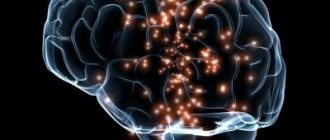Sports psychology plays an important role in the life of every athlete. When you watch them on TV, it seems that winning is not so difficult, you just need to train hard. However, in reality everything is much more complicated. Athletes are people just like us. They also face difficulties or are simply in a bad mood. Therefore, it is not surprising that sometimes they want to give up everything and leave. In this case, psychologists provide tremendous support, helping to cope with tension and tune in to victory.
Definition of the concept
Sports psychology is the science of existing and developing new diagnostic, therapeutic and preventive methods of working with athletes, both professional and beginners. Its main task is to create the right motivation, as well as create a suitable emotional environment for each individual person.
Sports psychology appeared in the first half of the last century. This concept was introduced by the founder of the Olympic movement, Pierre de Coubertin. However, despite its existence, very little attention has been paid to the psychology of sports. And this was the case almost until the Second World War. All due to the fact that sport was not considered an important part of human life. No, its individual types, of course, have been studied. But state leaders did not consider it necessary to explore the capabilities of athletes.
After World War II the situation changed dramatically. Experiencing an unprecedented decline, the countries tried to stand out from each other at least in the sports field. And soon victory at international competitions was considered an unprecedented achievement. In addition, it gave the state the opportunity not only to express itself on the world stage, but also to change the political situation.
From the second half of the 20th century to the present day, dozens of seminars on the psychology of sports are held annually in Europe and America. Many leading psychologists are undergoing additional training or complete retraining in order to participate in the development of even better training methods.
Glossary[edit | edit code]
Adaptations
(in the psychological meaning of this term) are elementary forms of changes in mental functions when processing information coming from the external environment.
Adaptability
— individual possibilities of adaptation to changing conditions, which are formed by motives, goals, tasks and situations of activity; at the same time, the ability to most quickly and conflict-free adapt one’s own behavior at a given specific point in time changes.
Group
- a certain set of people considered from the point of view of a certain community, for example, social, industrial, economic, household, professional, age, etc. A small social group is usually understood as a social system with a small number of members, the members of which, based on the goals and characteristics of the group that are common and characteristic of the group, are in stable and direct interaction.
Conflict
- a contradiction between people, which is characterized by confrontation.
Giftedness
- the optimal combination of personality qualities and abilities that determine the possibility of successfully performing a certain activity.
Psychological preparation of an athlete
- an organized, controlled process of realizing his potential mental capabilities in objective results adequate to these capabilities. Psychological preparation, being an integral part of the general system of sports training, depends on its other forms: physical, technical, tactical.
Mental condition
- a regulatory function of human adaptation to the surrounding situation and environment, a unit of the holistic psyche. In this system, the functions of states consist of a specific influence on the formation of mental properties and the course of mental processes, as well as an influence on the organization of the psychological structure of the individual as a whole. Thanks to the regulatory function of mental states, an adaptation effect is achieved, that is, bringing the psychological characteristics of the subject into line with the requirements of various types of activity.
Psychology of sports
- a branch of psychological science that studies the characteristics of an individual operating in specific conditions of sports activity. The main goal of sports psychology is ~~ the study of psychological patterns of specific activities of athletes and teams and the development of psychologically sound methods of sports training.
Functional states
:
- emotional arousal (a state characterized by activation of various body functions, increased readiness for various actions in response to emotiogenic factors);
- emotional stress (a state characterized by the activation of various functions of the body in connection with specific volitional acts, with the implementation of active purposeful activity or preparation for it, as well as with the expectation of any danger);
- stress, or increased tension (a condition characterized by a temporary decrease in the stability of various mental functions, coordination of movements and performance).
Extreme activity is a type of activity that at a certain point in time is individually impossible for a particular person due to the near-maximum tension of psychophysical forces.
What is the role of psychology in sports?
Sports psychology pursues the following goals:
- Studying the psychological health of each individual athlete.
- Creation of a database in which the received diagnostic and therapeutic information will be stored.
- Drawing up an action plan based on the data obtained, as well as finding the best ways for individual or team development.
- Providing assistance in the formation of the correct psychological attitudes that help athletes deal with difficulties during training.
- Helping new players adapt.
- Development and subsequent implementation of corrective therapy.
- Improving the quality of psychological culture.
- Development of methods for eliminating psychological stress before and after competitions.
- Providing all types of psychological assistance if necessary.
A sports psychologist not only controls the atmosphere in the team. He participates in developing training, selecting players for certain positions, and creating game strategy. At the same time, he tries to maximize the potential of each individual person, taking into account the characteristics of his personality and character.
Hardware technique "Arch"
The “Arch” technique was developed by Doctor of Psychology. Sciences, Professor Alexey Sergeevich Chernyshev and Doctor of Psychology. Sciences, Professor Sergei Vasilievich Sarychev for diagnosing a small group in joint activities, forming and developing teamwork skills. “Arch” is a prefabricated structure in the form of an arch (hence the name of the device), which a group of subjects must assemble, acting together under certain conditions assigned by the experimenter. Working with the technique makes it possible within a few minutes to clearly demonstrate the interaction in a group and the relationships between its members. “Arch” is designed to work with groups of 2 to 20 people. Particular diagnostic and correctional prospects for using the technique appear in those areas in which collective action is very important in solving particularly important, complex special problems, including in professional sports teams.
“Arch” is a unique tool that allows a specialist to quickly and efficiently diagnose and study such important factors as:
- team cohesion;
- complex mechanisms of interaction between team members in various conditions;
- leadership issues;
- team stress resistance;
- team motivation;
- difficulties and mistakes at various stages of team interaction;
- psychological climate of the team. [5]
With the help of “Arch” you can work on group interaction, solving internal problems of the team in the process, increase the overall emotional mood and stress resistance of team members, and improve the psychological climate.
Goals and objectives of a sports psychologist
Now let’s look at the functions and responsibilities of a sports psychologist in more detail. We can say that he is a family psychotherapist who takes care of each individual member. This is the “right hand” of the coach, who is involved in the psychological preparation of the team. Sometimes the participation of specialists who carry out individual work is required. They help athletes who, due to personal difficulties and discomfort, cannot achieve success.
There are several tasks that are assigned to a sports psychologist:
- Studying methods of influencing the psyche. The specialist needs to find out what personal characteristics of a given person will help him become a winner in his chosen sport. To do this, he diagnoses character traits, evaluates existing skills, as well as the training program and even living conditions. Only after this can he conclude whether the athlete has a future or not.
- Creating an atmosphere that will enhance the overall effectiveness of the team. It is important to work together with a coach here. This is the only way to simulate a situation that will be as close as possible to real competitions. Analyzing and assessing the behavior of each player will help you choose the best position for him, see and work on weak points in time, as well as strategies that can lead to defeat.
- Development of individual training. By observing athletes, a sports psychologist develops methods of preparing for competitions that will help cope with stress and maintain normal mental health.
- Development of preventive measures. They are needed in order to reduce the level of injuries, prevent severe fatigue and prevent professional deformation of the individual.
- Identification and subsequent resolution of conflict situations. Crises and conflicts are not surprising. They happen in the life of every person. But athletes encounter them more often. Excessive loads are not the only thing to blame for this. As you know, those who are professionally involved in sports go into “well-deserved retirement” early; they are no longer as in demand as before, and it is more difficult for them to cope with defeats and defeats. The tasks of the psychologist in this case are: to show a person how to harmoniously combine personal and sports life, to teach him to receive positive emotions not only from sports, but also from other activities.
This is only part of the responsibilities of a sports psychologist. If necessary, it performs other functions. It all depends on the needs of a particular team.
Variational chronoreflexometry
The technique is intended for diagnosing the functional state of the human central nervous system (CNS) and predicting its performance based on indicators of variation chronoreflexometry - dynamic characteristics of the time of a simple visual-motor reaction. Developed and patented by Margarita Pavlovna Moroz , Doctor of Biological Sciences, senior researcher at the S.M. Military Medical Academy. Kirov. The methodology was tested at the Military Medical Academy named after S.M. Kirov: the results were compared with the results of a large diagnostic complex aimed at studying physiological, psychological and psychophysiological indicators.
The technique can be used to solve problems of diagnostics, examination, rehabilitation and scientific research, in particular to monitor the process of sports training, assess the psychophysiological state, functional capabilities, predict the performance (and, accordingly, fatigue) of athletes, as well as to assess the functional state of sports injuries. The technique is implemented in the form of a computer program that allows you to fully automate the entire process of collecting, processing and storing diagnostic data. The entire testing procedure takes literally 5 minutes and can be carried out many times since it does not cause a training effect [6].
Today, psychologists have extensive and varied diagnostic tools that allow them to study various psychological aspects of athletes’ activities. The choice of methods and tools depends on many factors: type of sport; immediate problems facing the athlete or team; diagnostic conditions; personal characteristics of the subject, his motives, goals and experience. At the moment, experts continue to actively work on modifying the existing psychodiagnostic tools, and are also trying to find new, more advanced methods to increase the efficiency of selection for sports teams, predict the success of athletes and help them cope with difficulties and injuries.
Psychology of Team Sports
Preparation for a team game occupies a separate place in the work of a sports psychologist. The ability to work in conjunction with other players, to put common interests above your own - this is a real art. But in order to master it, you need to put in a lot of effort.
To develop team spirit you will need:
- Correct influence on the volitional orientation of the team.
- Creating a healthy atmosphere within the team.
- Step-by-step preparation of athletes for competitions.
Let's look at the last point in more detail. In order to prepare players for any outcome of events, you need to:
- Assess the psychological state of each athlete who will play on the team.
- Study of the psyche of “newbies”.
- Making a forecast about how players will behave in a team.
- Training, the main task of which is to develop a sense of belonging to one team and motivation to achieve a common result.
- Relieving stress that occurs when communicating and joint activities with other people.
- Assistance in adaptation before, during and after competitions.
All team members, coaches and psychologists without exception must participate in psychological preparation. Only in this case will it bring tangible results.
Literature:
- Ilyin E.P. Psychology of sports. - St. Petersburg: Peter, 2008. - 590 p.
- Safonov V.K. Psychology of sports as a direction of psychological science // Bulletin of St. Petersburg State University. Series 6. - 2012. - Vol. 2.
- Timofeev V.I., Filimonenko Yu.I. Color test for diagnosing neuropsychic conditions: Methodological manual. — 2nd ed. - St. Petersburg: IMATON, 2015. - 40 p.
- Safonov V.K., Filimonenko Yu.I., Suvorov G.B. Possibilities for diagnosing the condition of an athlete in elite sports // Mental states. - St. Petersburg: Peter, 2000.
- Chernyshev A.S., Sarychev S.V. Hardware technique "Arch". Diagnostics of a small group in joint activities: a methodological guide. - St. Petersburg: IMATON, 2021. - 50 p.
- Moroz M.P. Express diagnostics of a person’s performance and functional state. Recommendations for permission to work: methodological guidance. — 2nd ed., rev. and additional - St. Petersburg: IMATON, 2021. - 64 p.
Features of the formation of the winner's psychology
Of all the above-described tasks of sports psychology, one is worth highlighting separately - the development of a winner’s psychology in an athlete. All people are different. It is a fact. Therefore, those methods that work with one person may be completely ineffective when working with another. This is the main difficulty in choosing a method of psychological regulation.
In order to motivate athletes to win, psychologists conduct special trainings. Most often they consist of three parts:
- Main. The specialist creates conditions for competition in everyday life for the player.
- Installation. It is carried out directly during the most serious training.
- Pre-competition. The psychologist conducts this part before the competition.
At each of these stages, visualization and verbal attitudes are used. Classes can be either individual or group. The result in both cases is the same - the athletes are determined to win.
Psychological characteristics of sports
As an activity, sport has a number of its own psychological characteristics.
On the psychological characteristics of E.V. Melnik and Zh.K. Shemet includes 7 main ones:
- Psychomotor is the most important feature of sports activity, representing the functional relationship of mental processes with movements and activities. Psychomotor skills ensure mastery of the technique of a particular sport and connect the main factors and patterns of mental development that ensure this mastery. Specialized perceptions, for example, the feeling of the ball, voluntarily controlled actions, speed and accuracy of response to stimuli are classified as psychomotor processes;
- Any athlete naturally strives to improve in his sport and this is the second feature. To achieve high results, he must be fluent in the technique of performing physical exercises, and this requires long-term and regular training. During training, the formation and improvement of those motor skills that are necessary for a particular sport occur;
- The third feature is associated with the presence of sports wrestling, accompanied by vivid emotions that become acute during sports competitions;
- The fourth feature is related to the stressful nature of modern sport. Stress is especially pronounced at the level of large-scale competitions, the outcome of which is largely determined by psychological factors. The physiological and technical preparation of athletes is approximately at the same level. Young athletes are not yet distinguished by emotional stability and mental maturity;
- The presence of psychological characteristics of the athlete’s personality that contribute to sports success;
- Interaction of participants, which can take the form of direct or indirect struggle, and during competitions appears in two forms - rivalry in relation to the enemy and cooperation in relation to one’s team;
- The last seventh feature of sports activity is associated with verbal and non-verbal communication - these are gestures, pantomime, involuntary motor actions.
Note 1
Psychological activity, like any other, has its own psychological structure; it can be represented by the diagram: goal - motive - method - result.
The goal influences the choice of specific means by which the desired result can be achieved. The goal is the result of mental work; during this work, the athlete resolves the contradiction between the requirements of sports activity and his own capabilities.
A motive motivates one to move towards a goal, and sports activity is always multi-motivated. The motive is the experience of what is personally significant for the athlete. Motivation is the trigger for sports activity, maintains the required level of activity in training and competitions, and also regulates the content of activity to achieve the desired result.
Methods of sports activity include actions and operations that form the technique and tactics of a particular sport. The results can be viewed in both a narrow and broad sense. The narrow meaning is sporting achievements expressed in meters, points, seconds, and athlete titles. The broad meaning is the influence of sport on the development of individuals and society as a whole.
Modern sports psychology
The frantic rhythm of life leaves its mark on absolutely all people living on the planet. What can we say about athletes who add physical stress to emotional stress? And these pressures are constantly growing, making it extremely difficult to reduce the impact of stress. As a result, serious disorders develop in the form of increased anxiety, demotivation, etc.
The task of the coach and sports psychologist in such a situation is to minimize all manifestations of discomfort. It is important to cooperate and distribute responsibilities correctly. The coach, using personal and professional experience, guides the athletes, and the psychologist identifies and eliminates all negative factors that may arise during the training process.
Extremeness as a condition for sports activity[edit | edit code]
High-level sports activity is extreme because at certain stages it becomes individually impossible due to the near-maximum tension of the athlete’s psychophysical strength. Such tension can reach an individual “limit”, beyond which a refusal to perform an activity or a breakdown occurs. Each individual has a “corridor” of psychophysiological stress, within which he can withstand the negative consequences of stress.
From the standpoint of the theory and methodology of sports training, extreme sports are those associated with real danger: motorsports, mountaineering, parachuting, diving, etc. From the PS standpoint, all types of elite sports can be called conditionally extreme or para-extreme activities. The main sign of such activity, in addition to near-limit stress, is risk (for example, the risk of missing a decisive shot in fencing). Extreme situations are typical for all sports.
V.D. Nebylitsyn (1976) systematized external factors (“stressors”), which he considered as primary sources of tension and overstrain, as well as internal personal factors that mediate the influence of the former and determine the features of psychological reflection and assessment of the situation. However, the assessment (feeling) of the limit at which these elements, when they shift to extreme values, become “ultimate” is a purely individual value.
In sports, the extremity of the situation is due to objective factors (great physical and mental stress, restrictions inherent in the training regime, dangerous situations, typical, however, not for all sports, strict conditions for selection into the team and pre-competition preparation, high competition, characteristic of any type of modern sports). Among the most typical factors of extreme situations in modern sports are:
1) individual reactions to the discrepancy between the work performed and the effect in the form of a sports result,
2) the degree of activity tension, assessed differently by athletes with different individual characteristics,
3) individual dynamics of the state of fitness and especially sports form, which provokes different assessments of this state on the part of the athlete.
4) individual tolerance of maximum loads.
5) characteristics of reactions to individual components of physiological or mental stress,
6) attitude towards risky, traumatic situations,
7) suspiciousness when assessing one’s own capabilities and the capabilities of rivals (including attitude towards “inconvenient” rivals),
 specifics of formation of attitudes towards performing extreme actions.
specifics of formation of attitudes towards performing extreme actions.
9) the specificity of attitudes towards the constant psycho-emotional stress of training activities,
10) specificity of the motivational-need, emotional-volitional and cognitive sphere of the subject of activity.
Practice shows that not in all cases even a specially trained person retains the ability to soberly assess situations that arise under stressful operating conditions. Moreover, excessive exposure to stress, exceeding the duration and strength of the impact of a person’s individual adaptive abilities, called distress (G. Selye, 1977), can often lead to irreversible consequences.
Extreme activity provokes persistent distress, that is, an unfavorable mental state. The main feature of this phenomenon is the tendency not only not to disappear over time, but also to become more pronounced, and also to appear suddenly against the background of general well-being. Distress is a reaction not so much to the physical properties of the situation, but to the peculiarities of the interaction between the individual and the outside world. This is largely a product of motives, way of thinking and assessment of the situation, knowledge of one’s own capabilities (resources), the degree of training in management methods, behavioral strategies, and their adequate choice.
High requirements for the competitive activity of athletes, the ever-increasing intensity of sports competition and the extreme nature of its conditions give rise to new tasks that can be solved within the framework of sports psychology.
Bibliography[edit | edit code]
Eysenck G. Y. (1999). Personality structure (translated from English). St. Petersburg: Yuventa; M.: KSP+. {Psychological analysis of the personality structure of modern man.]
Bleer A.N. (2006). Extreme activity. Fundamentals of psychophysiology of extreme activity: Course of lectures. M. [Summarizing work on the problem of extreme activities of athletes.] Vyatkin B. A. (2000). Lectures on the psychology of human integral individuality. Perm. state ped. University, Perm. [Review of the problem of individual differences in sports.] Gissen L.D. (1990). Time of stress. Justification and practical results of psychoprophylactic work in sports teams. M.: Physical education and sports. [Book about the origin of stress in sports and the means of influencing it.] Dzhamgarov T. T., Puni A. Ts. (1979). Psychology of physical education and sports. M. [Characteristics of the main problems and tasks of sports psychology.]
Neydiffer P. M. (1979). Psychology of the competitive athlete. M.: Physical education and sports. [A practical guide to the psychological preparation of an athlete.]
Popov A.L. (2000). Sports psychology: Proc. manual for sports universities. 3rd ed. Moscow Psychological and Social Institute: Flint. [Tutorial on sports psychology.]
Psychology of elite sports. Textbook manual for the institute of physics. cult, (edited by A. V. Rodionov). (1979). M.: Physical education and sports. [Textbook on the psychology of elite sports.]
Rodionov V. A. (2009). Sports psychology in Europe//Sports psychologist. No. 3. P. 5~9. [Detailed presentation of materials on the history of sports psychology.]
Teplov B. M. (1961). Problems of individual differences. M.: Academy of Pedagogics. Sci. [Fundamental work on the problem of giftedness and abilities.]
Anshell M. N. (1994). Sport psychology: From theory to practice (2nd ed.). Scottsdale, AZ:
Gorsuch Scarisbrick. [Characteristics of theoretical and applied aspects of sports psychology.]
Clauss G. (1981). Woerterbuch der Psychologie. VEB Bibliographisches Institut, Leipzig. [Dictionary of psychological terms.]
Cox RH (1998). Sport psycho-gy: Concepts and application (4th ed.). Dubuque, IA: Wm C Brown. [Characteristics of the conceptual apparatus and problems of sports psychology.] Cratty BJ (1973). Psychology in contemporary sport. Englewood Cliffs, New Jersey: Pren-tice-Hall. [Practical issues of PS are outlined, including stress management in sports.]
Kunath R. (1991). Taetigkeitsorientierte Sportpsy-chologie. Verlag Harri Deutsch. [Issues of the psychology of sports activity are considered.]
Lidor R., Bar-Eli M. (Eds.). (1999). Sport psychology: Linking theory and practice. Morgantown, WV: Fitness Information Technology. [Collection of articles on sports psychology.]
Ostrow A. S. (Ed.). (1996). Directory of psychological tests in the sport and exercise sciences. Morgantown, WV: Fitness Information Technology. [Characteristics of tests used in sports psychology.]
Tenenbaum Gershon, Morris Tony. (2000). Sport and Exercise Psychology. ICSSPE. Vade Me-cum. Directory of sport science. 2nd Edition. P. 159~178. [A brief overview of sport psychology.]
Unesthal L.-E. (1981). Inner Mental Training. Orebro, Sweden: Veje Publishing. [A valuable practical guide to the use of one of the methods of psychological preparation—mental training.]










